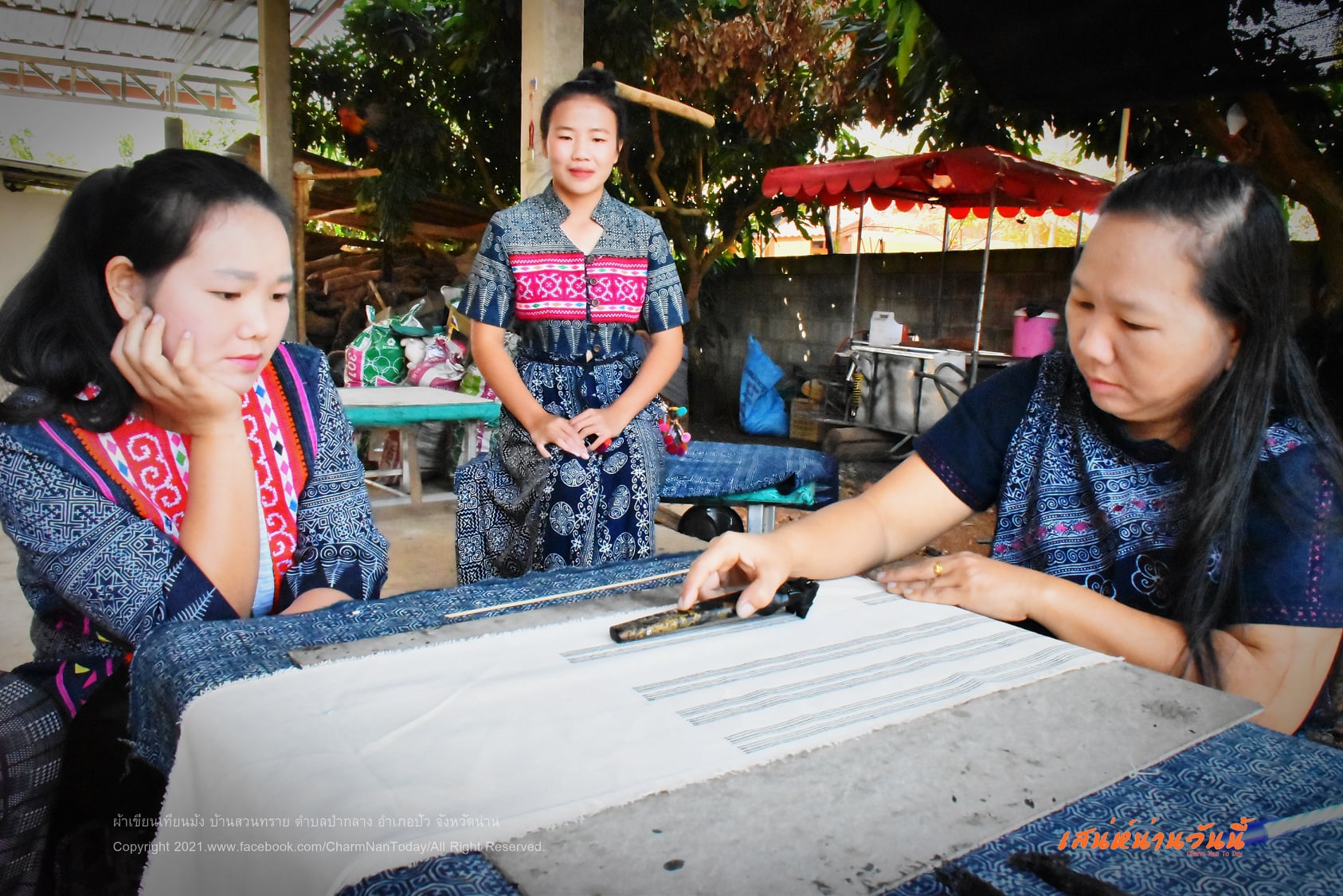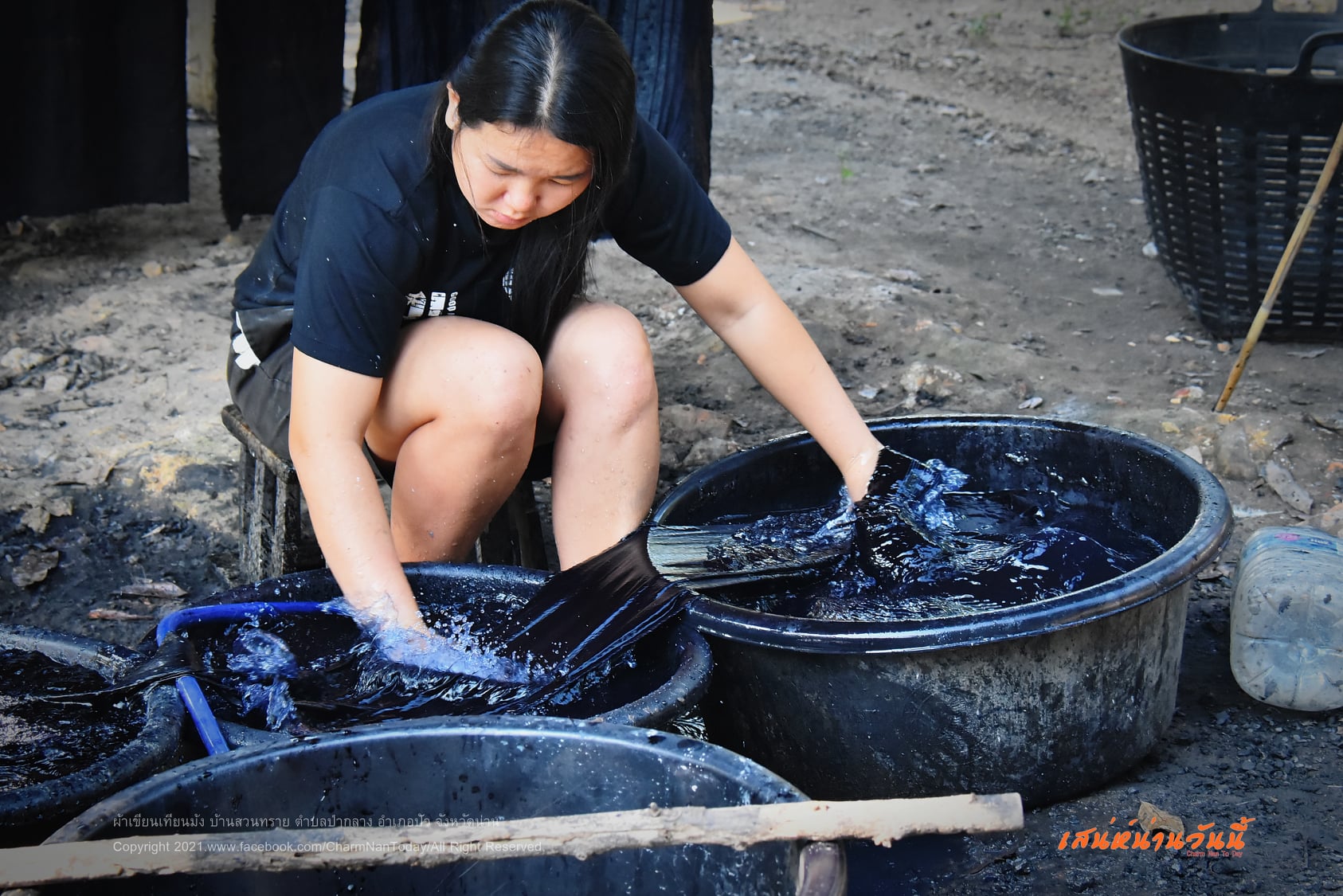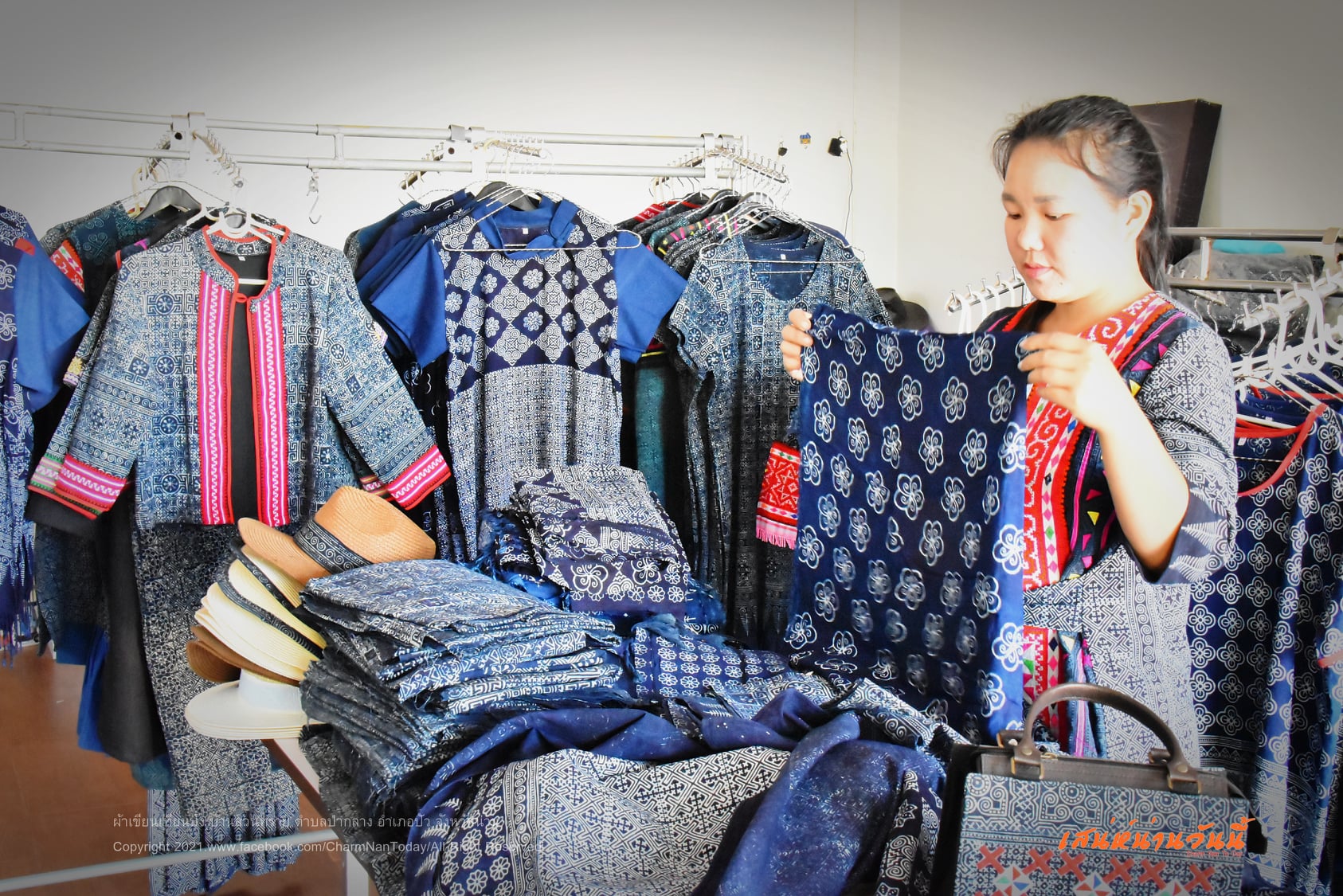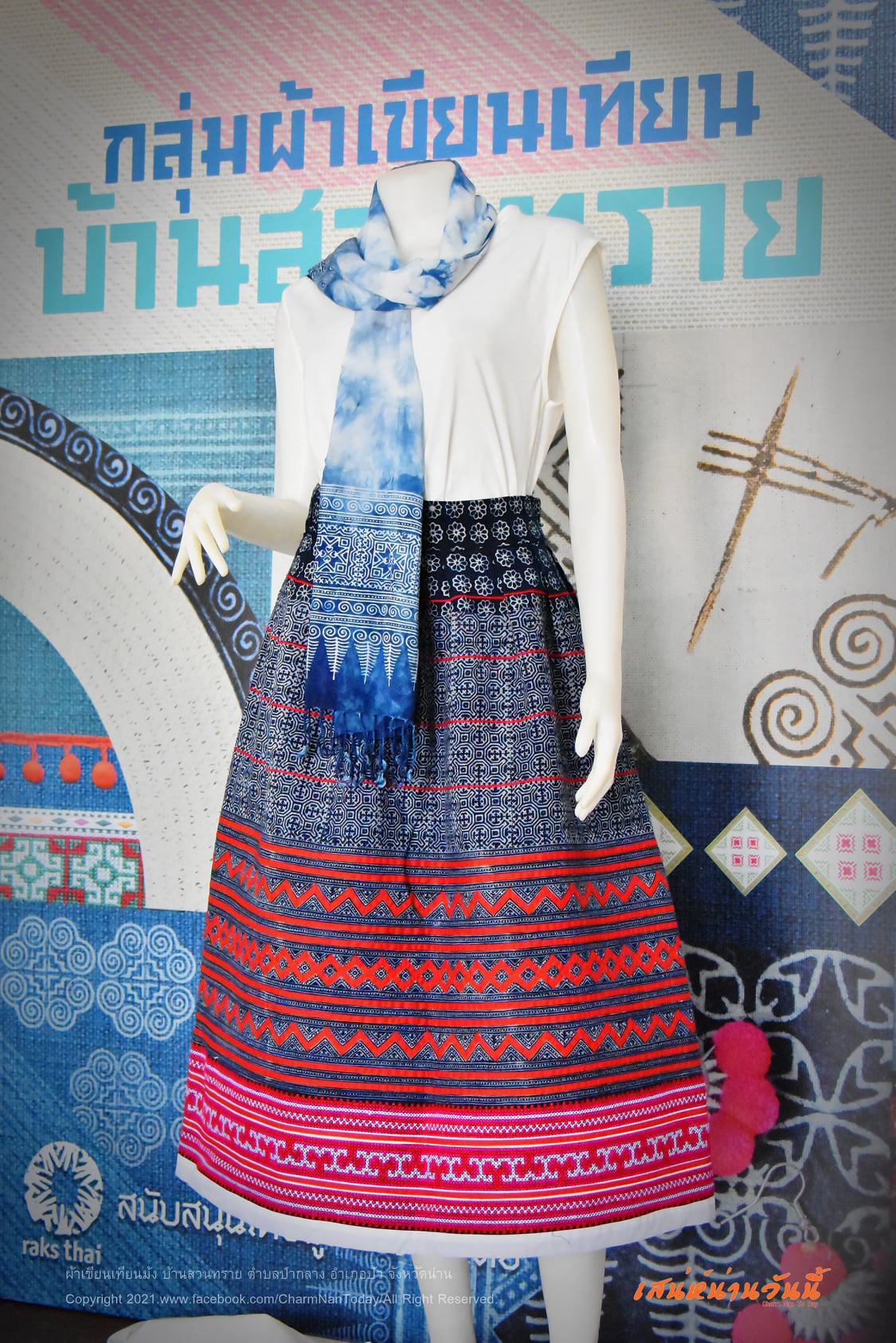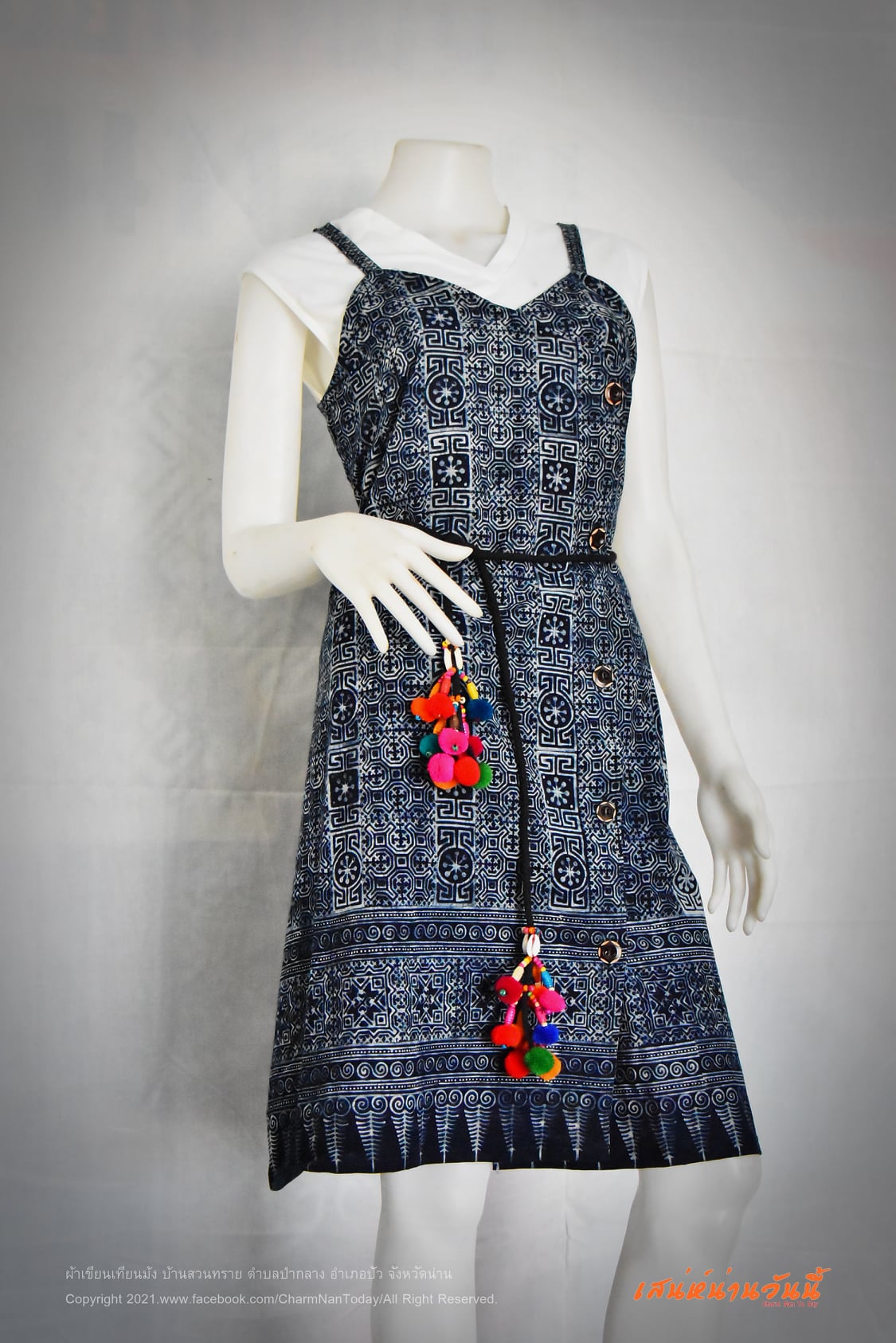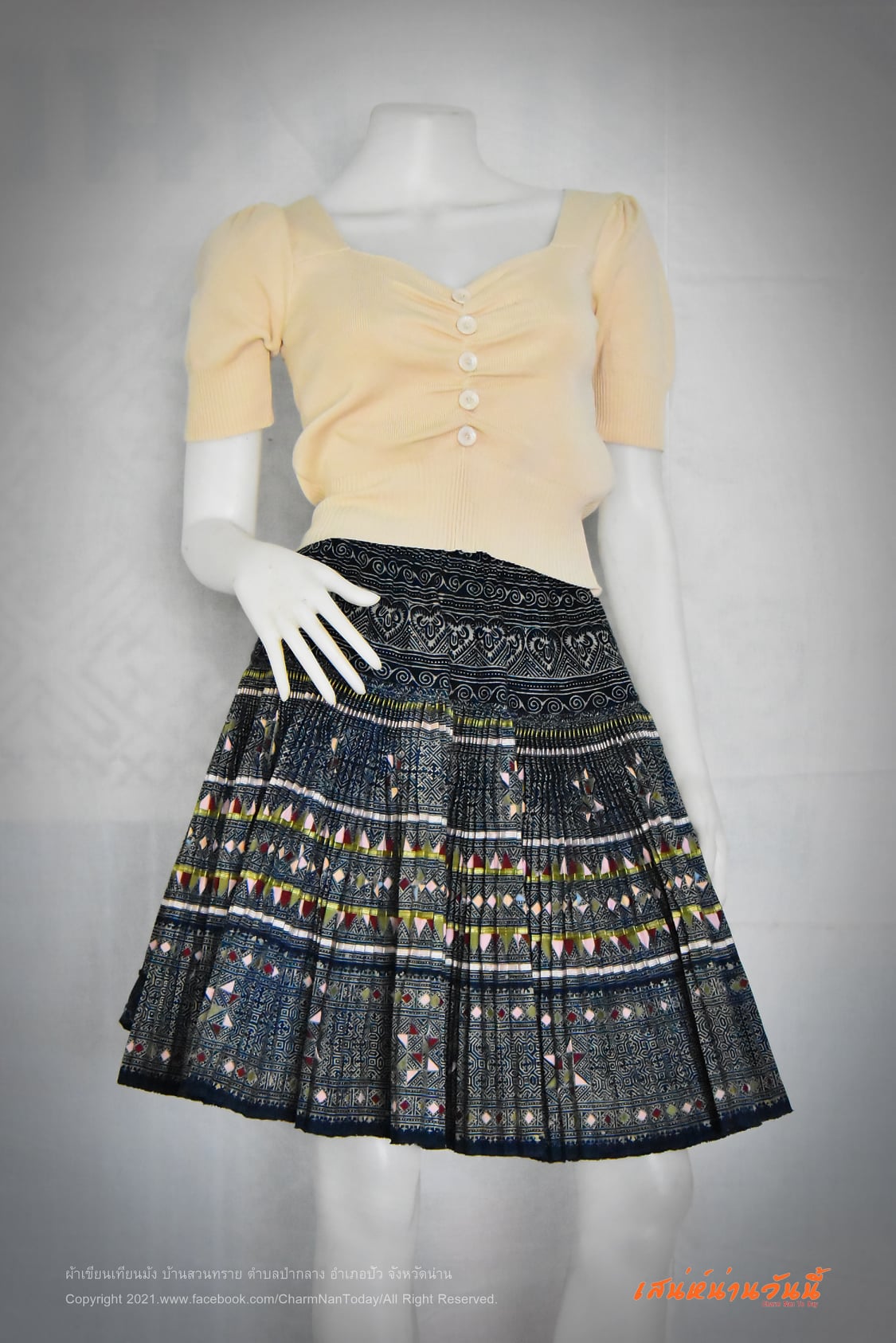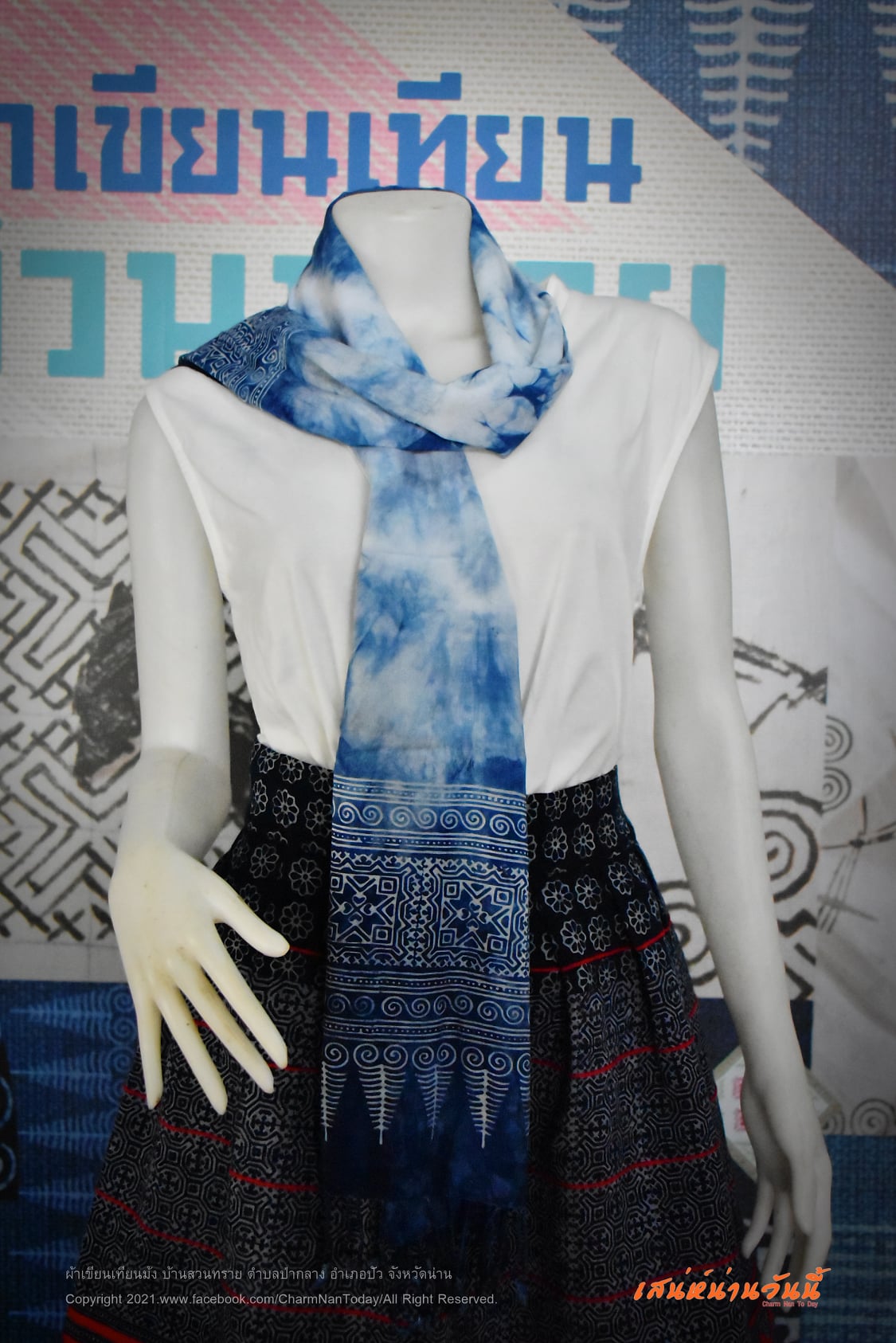“Women do embroidery and Men do ironsmith” - this quote reflects one of the core values and belief in Hmong culture, which has been passed down from generations to generations. This contributes to the gender roles seen in Hmong communities. Most Hmong women are trained to have the skillset for house work, childcare, and embroidery since a young age. In parallel, Hmong men are trained for agriculture and ironsmith work. Even though the current Hmong gender roles have undergone changes and are less restrictive, the traditional beliefs are still present within the communities.
Tarn, Khun Rattabhorn’s third daughter, is a part of the Hmong Batik fabric group at Ban Suansai. Tarn learned how to make Hmong Batik fabric from her mother since she was in primary school. She initially practiced by making basic patterns during her free time. On weekends, Tarn and her sisters were trained in the art of Hmong Batik fabric making by their mother in order for them to be able to develop their skills and create more complicated designs to reach their mother’s standard for Hmong Batik fabric pattern. Tarn completed her high school education and got married to a Hmong man from the same community. She did not want to pursue a higher education in university because she felt that it did not align with her life plans. Tarn loves to work independently and spend time with her beloved family. Tarn’s mother gave her the freedom to make these types of decisions herself and always provided support for whichever path she chooses to take.
 Donate
Donate
